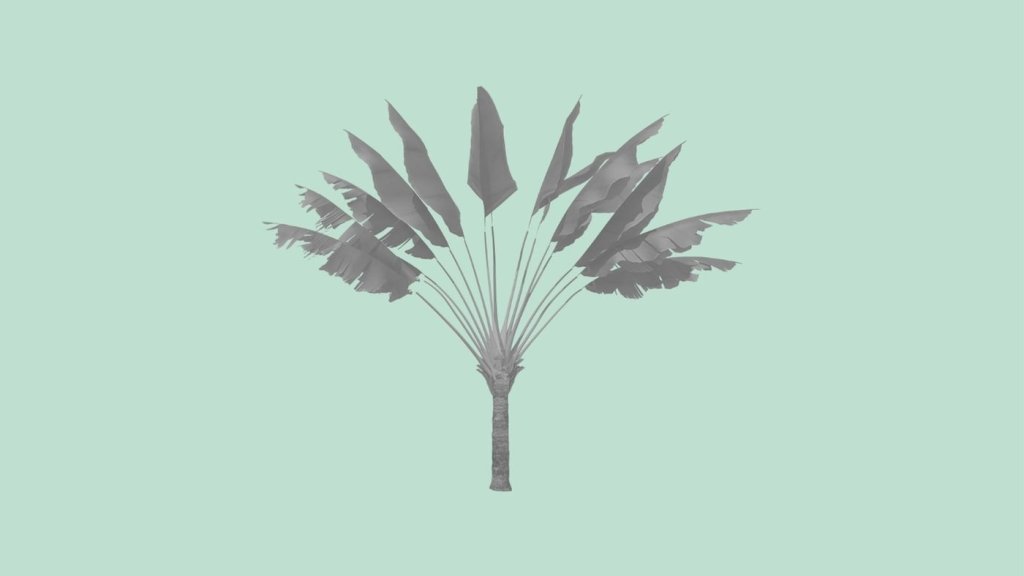The Traveler's Palm (Ravenala madagascariensis) is a distinctive and iconic plant native to Madagascar, known for its unique appearance and its reputation for providing travelers with a source of water. Despite its name, it is not a true palm, but rather belongs to the family Strelitziaceae.
One of the most fascinating features of the Traveler’s Palm is the way its leaves are oriented. They tend to grow in an east-west direction, which gives travelers the impression that the plant serves as a natural compass, aligning with the east-west axis.
The Traveler’s Palms are sometimes considered similar to the Banana Plant and the Bird of Paradise, but they belong to different botanical families and have distinct characteristics.
Where Are Traveler’s Palms found?
Traveler’s Trees are native to the island of Madagascar, which is located off the southeastern coast of Africa. These tropical plants are primarily found in the wild in the tropical and subtropical regions of Madagascar.
What Are You Foraging For Right Now?
We're thrilled to hear your ideas. What would you like to submit today? Feel free to share your thoughts and experiences with us.
Traveler’s Palms can be found in U.S. states that have a warm climate and meet the growing requirements of these plants (USDA 9-11), including in Southern Florida, Southern California and Hawaii.
In their native habitat, Traveler’s Palms can be seen growing in various landscapes, including rainforests, humid forests, and along watercourses. They thrive in areas with warm temperatures, high humidity, and consistent rainfall.
Why is it Called Traveler’s palm?
The name “Traveler’s Palm” is derived from the unique arrangement of the leaves, which can resemble a fan or an open hand. These leaves are oriented in an east-west direction, allowing them to catch and collect rainwater at their bases, forming natural reservoirs. This feature gave rise to the plant’s common name and the associated myth that travelers could find drinkable water in the leaf bases to quench their thirst.
The ‘Water Source for Travelers’ Myth
Despite the misconception that these rainwater-filled leaf bases could serve as a convenient water source for travelers, it’s important to note that the water collected in the leaves is often not suitable for drinking due to the risk of contamination and limited quantity.

How Do You Identify the Traveler’s Palm?
Leaf Arrangement and Orientation
The most distinctive feature of the Traveler’s Palm is the arrangement of its leaves. The leaves are large, paddle-like, and fan-shaped. They grow in a single plane, creating a symmetrical and striking appearance.
The leaves are arranged in a predominantly east-west direction. This orientation gives the appearance of an open fan or hand, with the tips of the leaves pointing in the direction of the sun’s movement.
Each leaf is composed of a long petiole (leaf stem) and a wide, flat blade. The leaf color is primarily vibrant and rich green.
Flowers
The Traveler’s Palm produces large, white, bird-of-paradise-like flowers that emerge from the leaf axils. The flowers have a unique structure and coloration that makes them visually distinct.
Seed Capsules
After flowering, the plant produces seed capsules that contain numerous flat, winged light blue seeds.
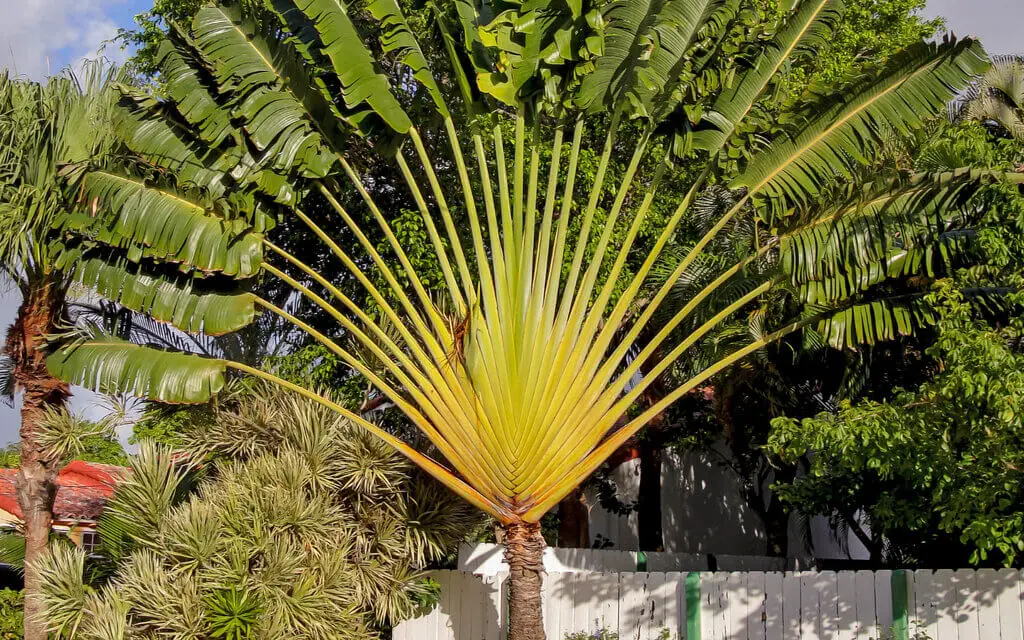
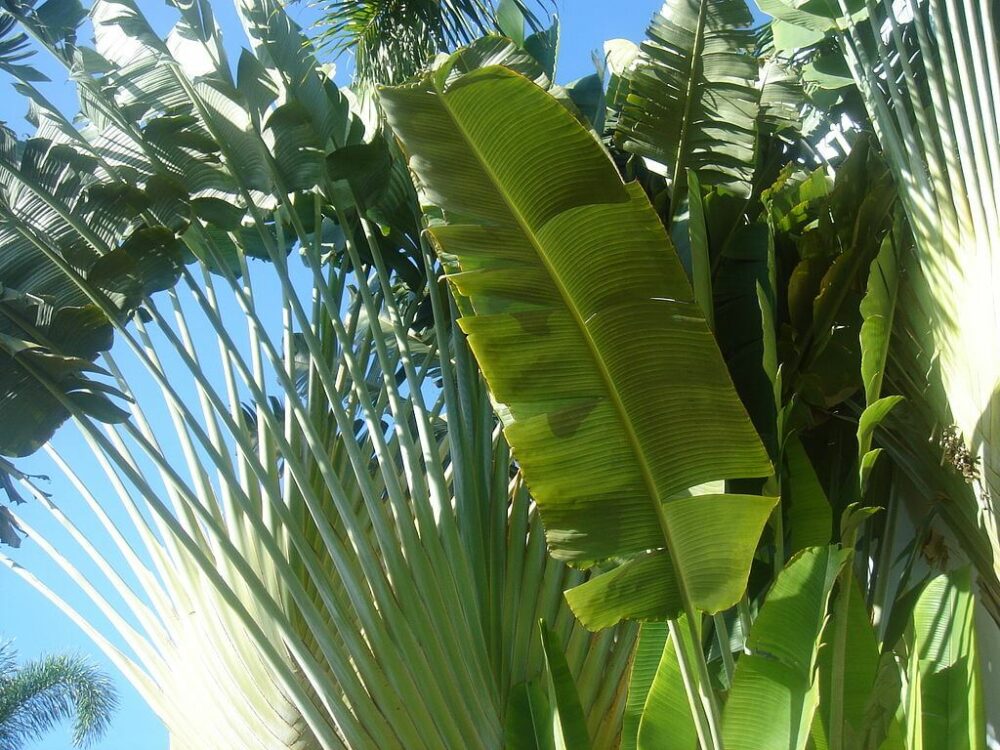

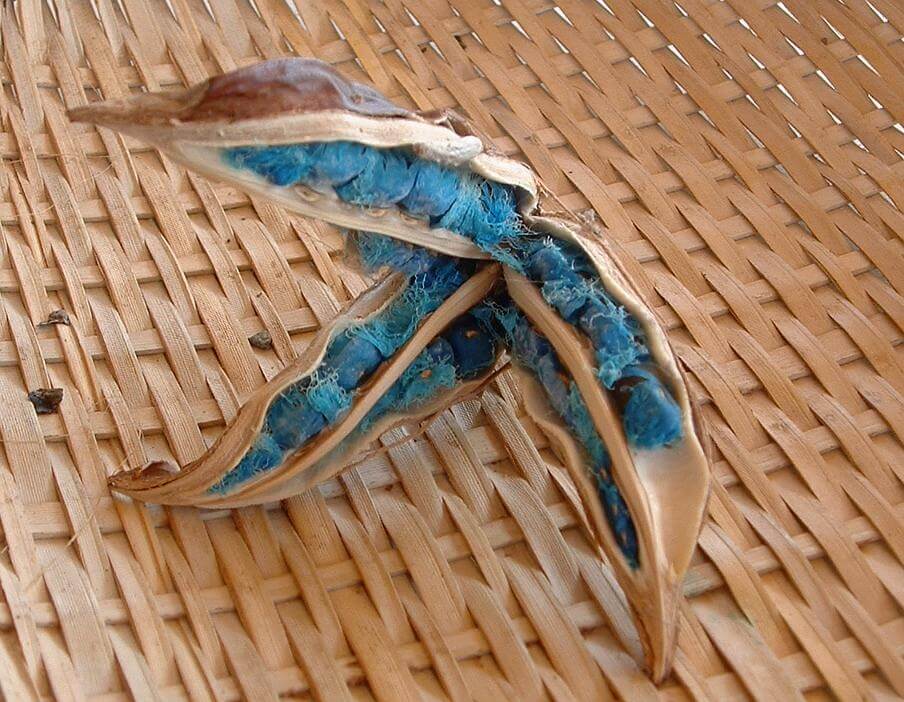
How tall do traveler’s palms grow?
On average, a mature Traveler’s Palm can reach heights of around 30 to 40 feet (9 to 12 meters).
However, some well-cared-for specimens have been known to grow even taller, occasionally reaching heights of up to 50 feet (15 meters) or more.
Traveler’s Palm vs. Bird of Paradise vs. Banana Tree
While the Traveler’s Palm, Bird of Paradise (Strelitzia reginae) and the Banana tree (Musa spp.) are visually stunning and evoke tropical landscapes, they have different leaf arrangements, flowers, sizes, and growth requirements.
The Traveler’s Palm is known for its fan-shaped leaves and the myth of providing water for travelers, while the Bird of Paradise is recognized for its distinctive orange and blue flowers that resemble a bird in flight.
The Banana Tree is recognized for its pseudostem, edible fruits, and its widespread cultivation as a food crop and ornamental plant.
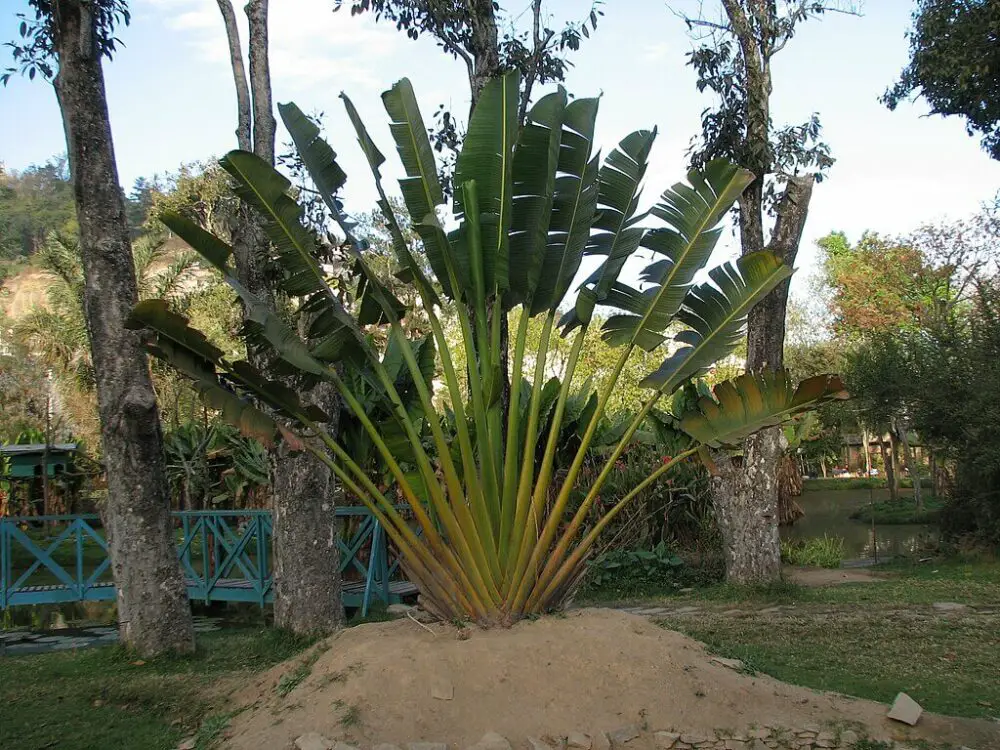
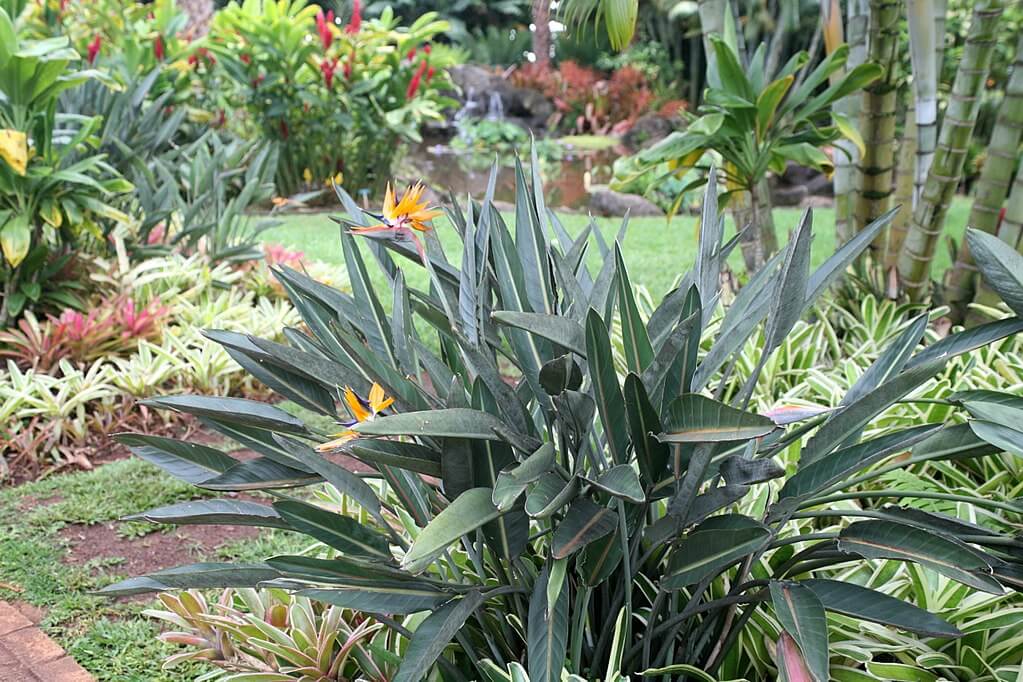
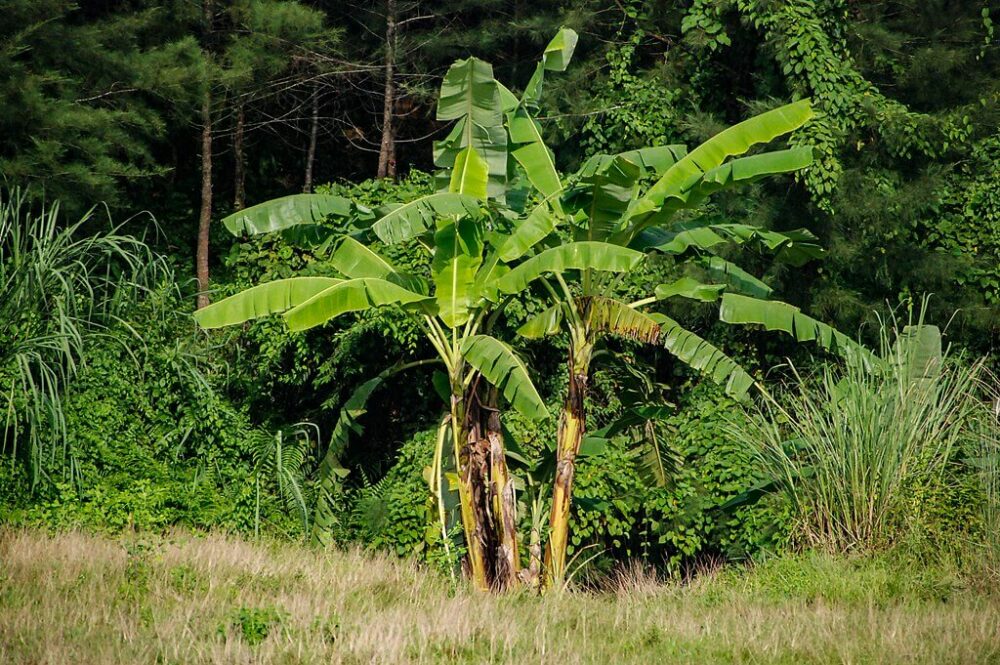
What is a common use for traveler’s palms?
Traveler’s Palms are often used in landscaping to add a touch of the tropics to outdoor spaces.
Are any Parts Edible?
The Traveler’s Palm is primarily known for its ornamental value and landscaping uses. There is limited reliable information regarding its credibility.
Its young leaves and starchy young fruit are used as food in certain regions. so are the oily blue seeds and the sap extracted from the leaves, which is sometimes used to make syrup.
If you’re interested in foraging plants that are great for making jellies and syrups, check out these:
Growing and Caring for a Traveler’s Palm Tree
You’ll need patience with the Traveler’s Palm, as it’s slow to develop and won’t flower until it’s about ten years of age.
But there are a few tips that can help your Ravenala madagascariensis thrive.
- Once flowering begins, you can expect it to bloom mainly in summer. However, it may produce flowers all year.
- Although it doesn’t need full sun until it’s larger, the traveler’s plant needs a sunny spot.
- Using fertilizer is a great idea, as it responds well, especially when the growing season finds it high in nitrogen. Using a feed will allow the Traveler’s Palm to grow better, demonstrating better foliage.
- Although you want to avoid any climates out of the USDA 10 and 11 zones, this Ravenala species only requires minimal water under the right conditions.
What to read next: Spider Flower: identification, Recipes And Cultivation
Getting into the great, wet outdoors in search of edible plants, herbs, fruits and fungi is one of Sarah’s favorite outdoor pursuits. She thinks there’s nothing better than combining her passion for hiking with the start of the foraging season. Sarah’s definitely not afraid of a little rain and dirt, it’s all part of the fun.

